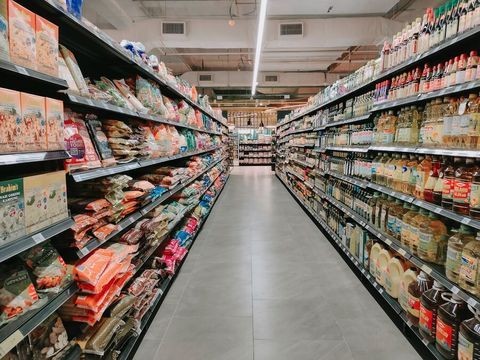Citizen Suit Alert: Environmental NGOs Set Their Sights on Plastics
Client Alert | 4 min read | 02.11.20
In recent months, environmental groups have ramped up their legal campaign against the petrochemical industry and have sued the U.S. Environmental Protection Agency (EPA) to impose stricter regulations on the manufacturers of plastic and sources of marine pollution.
On February 5, 2020, a group of environmental organizations, led by the Center for Biological Diversity (collectively, “Plaintiffs”), filed suit against the EPA in Hawaii federal district court alleging that EPA violated the Clean Water Act. Specifically, Plaintiffs claim that EPA should not have approved Hawaii’s list of “impaired waters,” i.e., waters that fail to meet the state’s water quality standards, because Hawaii did not identify any marine waters impaired by plastic pollution. According to Plaintiffs, microplastics pollute many of Hawaii’s coastal water bodies, causing them to be in violation of both quantitative and qualitative water quality standards. But because Hawaii did not add these waters to its impaired waters list, Hawaii is not required to develop a plan – known as a Total Maximum Daily Load (or TMDL) – for controlling this pollution, which Plaintiffs claim is harmful to wildlife and a threat to human health.
This is not the first time environmental groups have sought to use the Clean Water Act to force the cleanup of plastic pollution in rivers and other water bodies. Previously, environmentalists were successful in challenging the TMDL developed by the State of Maryland and the District of Columbia to improve the impaired Anacostia River. In March 2018, the federal district court for the District of Columbia struck down EPA’s 2010 approval of the TMDL for plastic pollution and other trash allowed in the Anacostia River under the Clean Water Act. The TMDL was improper, the court found, because it focused on removing trash already in the river, rather than on imposing controls to prevent trash from polluting the river in the first place. Significant to the court was that the TMDL was inconsistent with the plain meaning of the phrase “maximum daily load,” because it did not set an upper limit on how much trash could enter the river or identify the most trash the river could withstand before the water quality standards were exceeded.
Plaintiffs in the new Hawaii case have asked the court to order EPA to disapprove Hawaii’s impaired waters lists or, in the alternative, to reject EPA’s approvals and send them back to the Agency for a new decision.
This lawsuit is the latest example of a growing focus in the environmental advocacy community on the environmental impact of plastics. Plaintiffs had also petitioned EPA under the Comprehensive Environmental Response, Compensation and Liability Act (CERCLA) in 2012 to assess the environmental impact of plastic pollution on Tern Island and other parts of the northwest Hawaiian archipelago. EPA released its CERCLA preliminary assessment in 2014, finding that hazardous substances can accumulate in microplastics that are then ingested by marine life.
These groups are now targeting not only plastics that have already reached the environment, but also the facilities that refine petrochemicals and manufacture plastics.
In January 2020, the Center for Biological Diversity and others sued the U.S. Army Corps of Engineers claiming that the Corps violated a number of federal laws (including the National Environmental Policy Act) when it issued permits for construction of a new plastics manufacturing facility in Louisiana. The plaintiffs alleged the Army Corps was required to consider the cumulative impacts on the environment from plastic pollution that would result from the facility. Separately, in December 2020, an affiliated company reached a $50 million settlement to resolve a Clean Water Act citizen suit over plastic pollution in Texas.
In another example, 280 organizations collectively petitioned EPA in June 2019 to update the effluent limitations guidelines and standards applicable to discharges of water from petroleum refining and plastics manufacturing facilities. To date, the environmental petitioners have not filed suit to force EPA to take this action.
In addition to the authority to establish limits on wastewater discharges from plastics facilities, section 304 of the Clean Water Act provides EPA the authority to publish water quality criteria that inform states’ development of water quality standards. But EPA has yet to issue recommendations with respect to plastics as a category of pollutants under Clean Water Act section 304—though it has begun gathering information on the subject.
Environmental groups have cited examples of fish, other marine life, and birds consuming microplastic or being injured by plastic debris in the ocean in recent reports, and one environmental group has filed a lawsuit in California state court against food, beverage, and consumer product companies asserting several tort claims over the use of plastic bottles and packaging.
The topic of marine litter more broadly is also receiving increased attention, both internationally with actions by the European Union and Canada to ban single-use plastics and passage of the U.S.-Mexico-Canada trade agreement, and domestically with the enactment of the Save Our Seas Act. Some companies have formed an alliance to proactively develop solutions for reducing plastic waste and improving recycling and waste collection infrastructure in Asia and other parts of the world. And on February 11, 2020, Senators Tom Udall and Jeff Merkley, along with Representatives Alan Lowenthal and Katherine Clark, introduced the Break Free from Plastic Pollution Act of 2020, aimed at increasing recycling rates and reducing new plastics production.
In the absence of comprehensive federal or international action to address marine debris and plastic pollution, NGOs can be expected to continue to use litigation under existing laws and novel legal arguments to pressure policy makers to act. Through a combination of litigation, legislation, and company-led efforts, the next few years appear poised to change the life-cycle of plastic.
Contacts
Insights
Client Alert | 4 min read | 12.04.25
District Court Grants Preliminary Injunction Against Seller of Gray Market Snack Food Products
On November 12, 2025, Judge King in the U.S. District Court for the Western District of Washington granted in part Haldiram India Ltd.’s (“Plaintiff” or “Haldiram”) motion for a preliminary injunction against Punjab Trading, Inc. (“Defendant” or “Punjab Trading”), a seller alleged to be importing and distributing gray market snack food products not authorized for sale in the United States. The court found that Haldiram was likely to succeed on the merits of its trademark infringement claim because the products at issue, which were intended for sale in India, were materially different from the versions intended for sale in the U.S., and for this reason were not genuine products when sold in the U.S. Although the court narrowed certain overbroad provisions in the requested order, it ultimately enjoined Punjab Trading from importing, selling, or assisting others in selling the non-genuine Haldiram products in the U.S. market.
Client Alert | 21 min read | 12.04.25
Highlights: CMS’s Proposed Rule for Medicare Part C & D (CY 2027 NPRM)
Client Alert | 11 min read | 12.01.25





